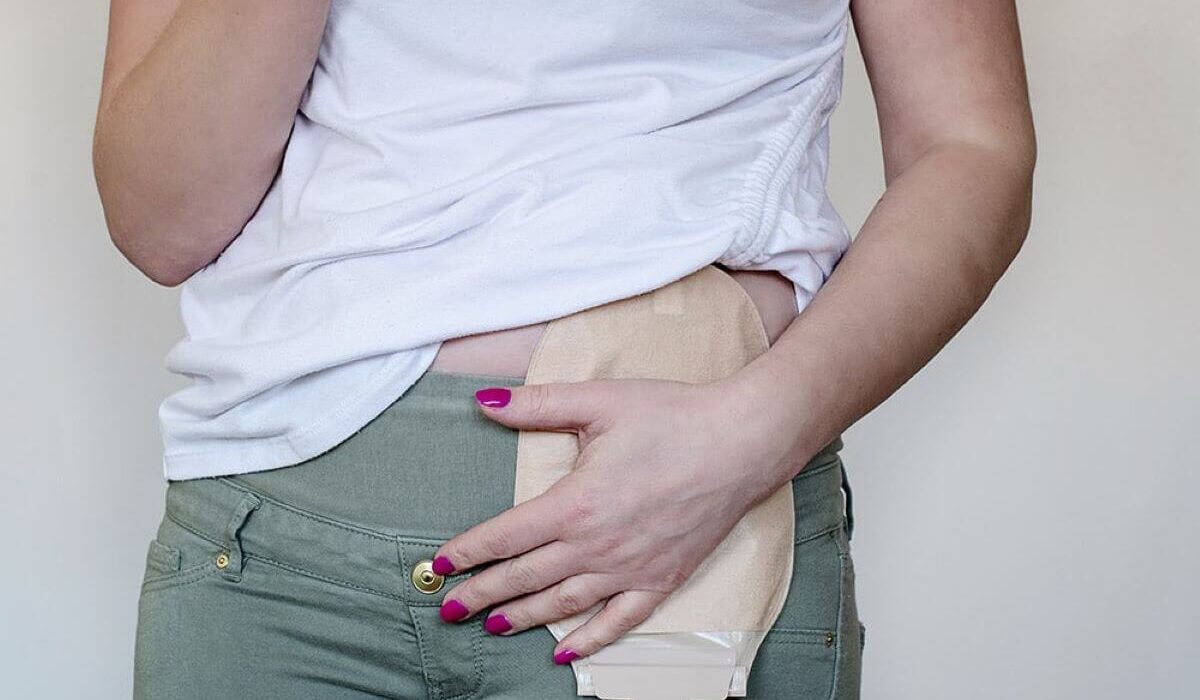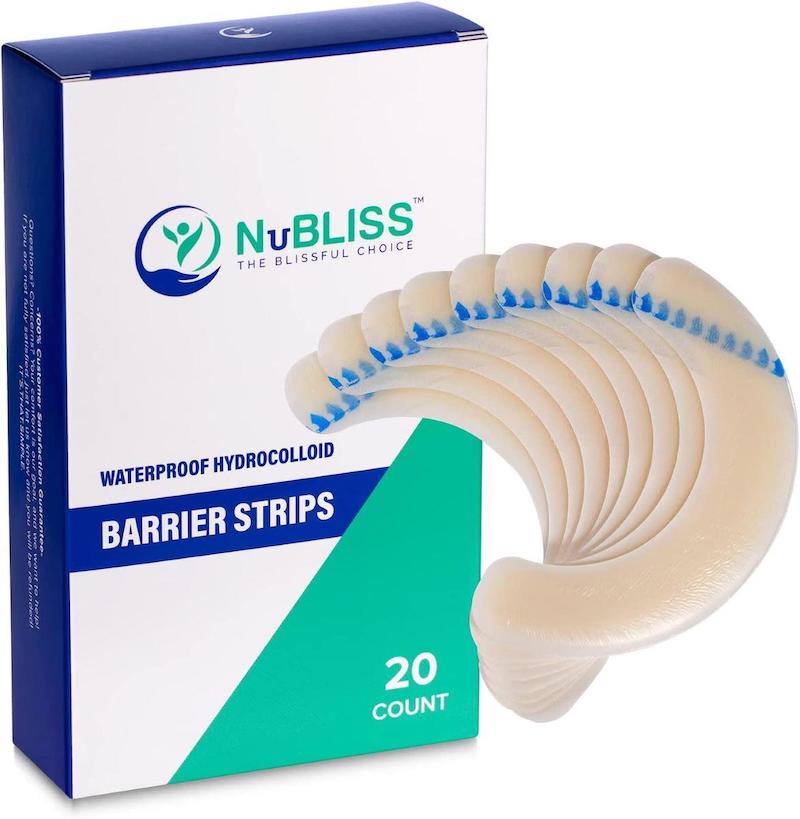Chronic digestive complications disease like Crohn’s disease, ulcerative colitis and Inflammatory Bowel Syndrome (IBS) are common place in the United States and globally. When these diseases progress, they can make life painful and difficult. It is at this time where a person suffering may make a decision to become an ostomate to live with less pain, and live a life that gives them more freedom from the barriers the above diseases create.
There are about 725,000 to 1 million ostomates in the United states, and approximately 100,000 new ostomates resulting from ostomy surgery performed each year in America.
What is an ostomate?
An ostomate is someone who has had a stoma surgery. A stoma is an opening in the body that is created during surgery. The surgeon brings one end of the small intestine or colon through this opening to the surface of the abdomen. This end is called a stoma, and the surgery is called a colostomy or ileostomy, respectively.
A colostomy can be temporary or permanent, but an ileostomy is always permanent. With a colostomy, stool passes from the colon into a pouch that collects it. With an ileostomy, bowel movements are more frequent and spontanous because there is no longer a rectum and anal sphincter to control them. Ileostomies tend to have more dietary restrictions than colostomies.
There are several reasons why someone might need to have a stoma surgery. Some common reasons include:
-Cancer in the colon or rectum
-Inflammatory bowel disease (Crohn’s disease or ulcerative colitis)
-Diverticulitis (a condition in which bulges form in the weak spots of your colon)
-Injury to the intestines
-Birth defects affecting the intestines
-Prevents fecal incontinence (the inability to control bowel movements)
While having a stoma may change some aspects of your life, it does not have to limit you. With proper planning and care, you can live a full and active life with a stoma.
Learn About Your Stoma Surgery
Before your surgery, your doctor will explain the procedure to you in detail and answer any questions you may have. It is important that you understand what will be happening so that you can be prepared for life with a stoma.

You may also meet with a nurse who specializes in ostomy care. There are nurses that specialize in ostomies called WOC nurses, which stands for Wound, Ostomy & Continence. This nurse can show you how to empty and change your ostomy pouch and give you helpful tips for caring for your stoma.
After your surgery, it is normal to feel overwhelmed or even anxious about your new reality. give yourself time to recover both physically and emotionally.
There are many resources available to help you adjust to life with a stoma including support groups, online forums, and ostomy associations. Ask your WOC nurse about support groups that are available through their hospital or other local groups.
Don’t be afraid to reach out for help when you need it. You are not the only one who has a stoma. It is more common than most think because it can be kept very private. There is no need to share your personal information with anyone who isn’t close to you. There are products and helpful videos to show you how to care for your stoma and these new care procedures will become second nature soon enough.
What are some basic ostomy supplies that I will need?
1. Wafers, also called Barrier Rings
ConvaTec Sur-Fit Natura Stomahesive Wafer
2. Ostomy pouches, also called ostomy bags
Pouches can come in either a 1pc or 2pc set up. One piece set up is more disposable, meant for 1 use mostly. The 2 pc designs can last more than one use. Here is a 1 piece design:
LotFancy 20 Pcs Colostomy Bags, Ostomy Supplies
3. Adhesive strips
Elastic Skin Adhesive Barrier Strips
4. Adhesive remover wipes
Safe n’ Simple Adhesive Remover Wipes
5. Skin Preparation Wipes
Safe n’ Simple No Sting Skin Prep Wipes
6. Ostomy deodorant
Safe n’ Simple Ostomy Pouch Deodorant
7. Stoma Cap
Coloplast Assura One-Piece Stoma Cap with Skin Barrier and Filter
Hernia belt / Ostomy support garment
Ostomy Surgery Recovery Tips
10 factors and considerations that will help you recover from your surgery
- Walk around
Get up and walk around as soon as possible after surgery to prevent blood clots from forming in your legs. Walking also helps ease gas pain and constipation.
- Avoid lifting anything too heavy
Avoid lifting anything heavier than 10 pounds for at least six weeks after surgery to prevent hernias from forming at your incision site.
- Avoid straining during bathroom time
Try not to strain when having a bowel movement as this can delay healing and cause bleeding at your incision site.
- Fiber
Ask your doctor about whether or not you should be eating fiber in a balanced way, or if you should avoid fiber. Some ostomates are told to avoid fibrous foods because they can lead to a blockage. It depends on your unique situation, so ask your healthcare provider where you stand on fiber in foods.
- Say “No thank-you” to caffeine
Avoiding caffeinated beverages like coffee, tea, and soda as well as alcohol as they can dehydrate you.
- Emptying your ostomy pouch
Empty your ostomy pouch when it is one-third to one-half full to prevent too much pressure from building up.

- Focus on wearing comfortable clothing
Wear clothing that is loose fitting and comfortable as tight clothing can put pressure on your ostomy site and irritate your skin.
- Inspect the ostomy site
Check your Ostomy site regularly for any redness, swelling, or drainage as these could be signs of infection.
- Noises from the stoma
If your stoma starts making noises, realize that this is part of the process, and quite normal. If this becomes an issue for you when you have to get back to your daily life, there are noise suppression devices that help.
A good noise suppressing device which also doubles as a stoma guard is called The Stoma Stifler. You can find information, videos and it can be purchased on its website:
www.stomastifler.com
10. Ask your doctor and/or WOC nurse any questions that arise, and address concerns
Keep your WOCN nurse and doctor’s contact numbers close by and do not hesitate to call and ask about any questions or concerns that you may have as you recover and as your new lifestyle becomes routine.
Regardless of why someone needs an ostomy surgery, it is important to know that there are many resources available post-surgery to help ostomates lead full and happy lives.
More from thewellthieone.com
The links used on thewellthieone.com are affiliate links, which may provide a small commission. This does not increase the price of the goods for the consumer whatsoever. What it does is ensure that useful content like this can continue to be produced. Thank-you for enjoying our content and allowing us to continue to provide more.









